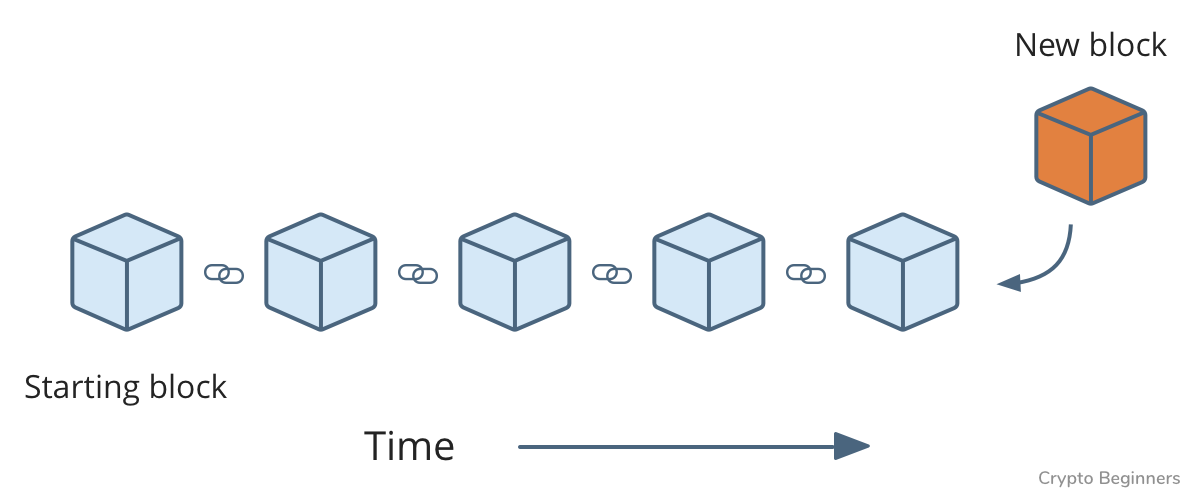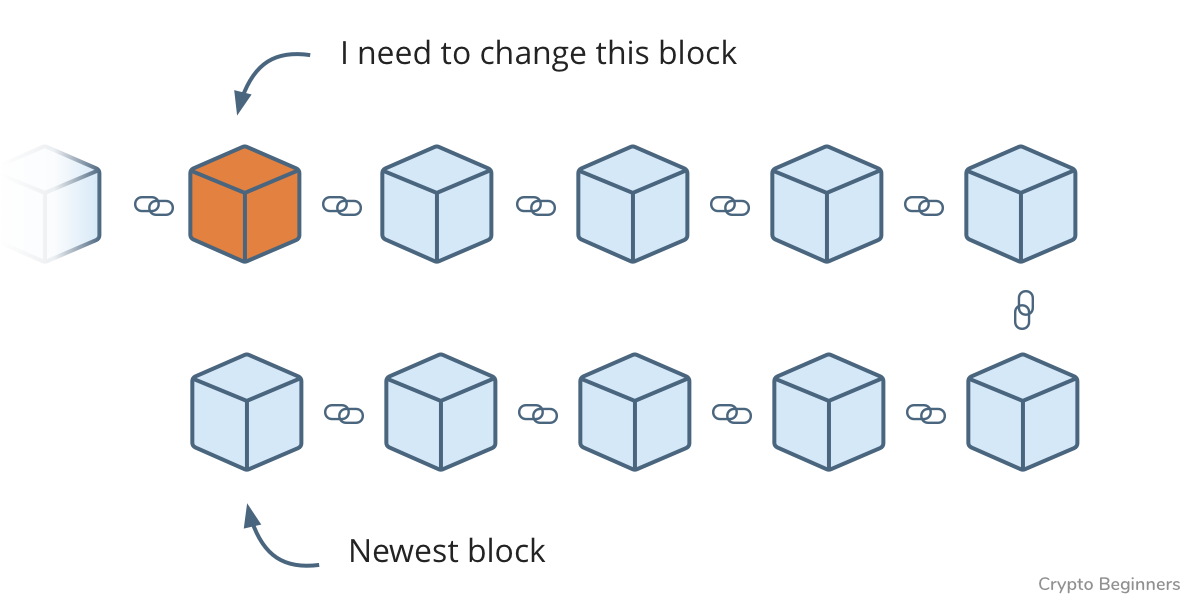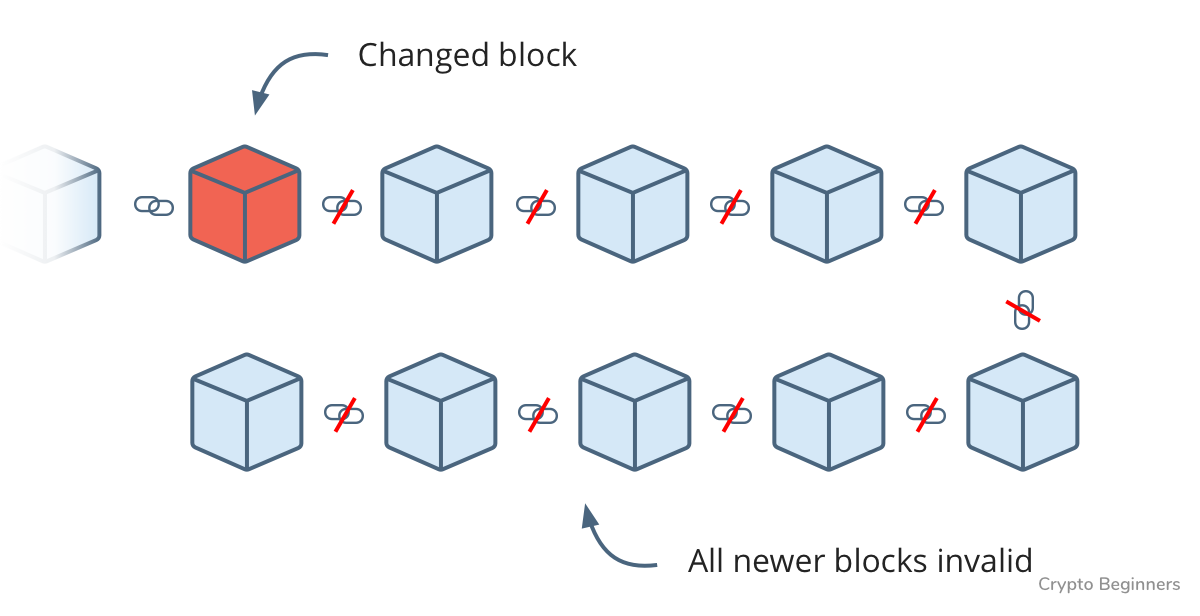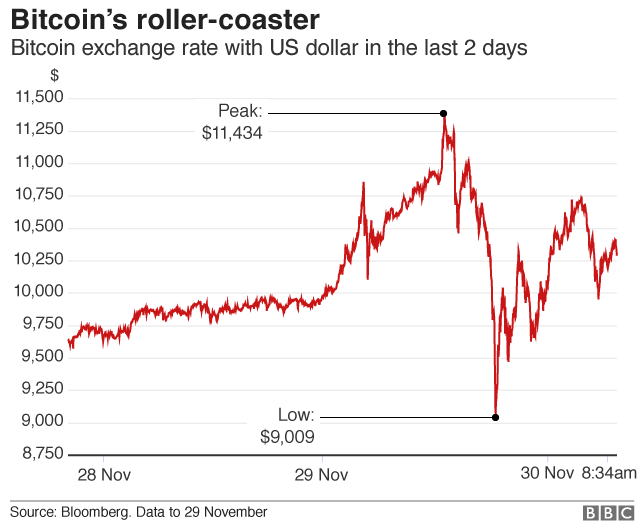Dec
2019
The Nature and Future of Bitcoin
The Nature and Future of Bitcoin -A Legal Analysis of Cryptocurrencies (PDF)
+++++++++
more on Bitcoin in this IMS blog
https://blog.stcloudstate.edu/ims?s=bitcoin
Digital Literacy for St. Cloud State University
The Nature and Future of Bitcoin -A Legal Analysis of Cryptocurrencies (PDF)
+++++++++
more on Bitcoin in this IMS blog
https://blog.stcloudstate.edu/ims?s=bitcoin

if I had duplicated my card, sent one copy out earlier then tried to send the second one to you, the history of that trade would already exist, so my second trade to you would conflict and be rejected.

that digital signature that gets put on each block? That is actually generated based on the info in the block, so changing the data (i.e removing my trade) automatically changes the signature.

an open, decentralised, non-reversible, tamper-proof digital network for trading valuable assets.
This is a simplified version of how blockchain technology works, but it’s easy to see how this tech gives Bitcoin its unique and fascinating properties.
+++++++++++
more on blockchain in this IMS blog
https://blog.stcloudstate.edu/ims?s=blockchain
For blockchains, the jury is still out
Aug 30th 2018
https://www.economist.com/leaders/2018/08/30/bitcoin-and-other-cryptocurrencies-are-useless
+++++++++++++
more on bitcoin in this IMS blog
https://blog.stcloudstate.edu/ims?s=bitcoin
Beginning Monday, authorities are rolling out a replacement for the apparently unironically named “strong” bolivar, swapping it out for a “sovereign” bolivar that will be pegged to the government’s proposed cryptocurrency, the petro. In the process they are devaluing Venezuela’s physical currency more than 95 percent and radically weakening its exchange rate
+++++++++++
More on bitcoin in this IMS blog
https://blog.stcloudstate.edu/ims?s=bitcoin
April 23, 20188:15 AM ET ANDREW NORTH https://www.npr.org/sections/parallels/2018/04/23/597780405/how-the-tiny-nation-of-georgia-became-a-bitcoin-behemoth
Georgia is now ranked second in the world for cryptocurrency mining — behind only China.
A single U.S.-based technology company called Bitfury has been accounting for much of this mining activity, from a vast data center filled with computer servers which it opened on the outskirts of the capital Tbilisi. It has generated plenty of controversy too over claims that it received overly generous terms for its electricity bills. But scores of smaller data centers have now sprouted up, with many more people mining from home with processors bought online from China.
making an average of $800 a month mining a currency called Zcash, with the extra electricity load costing about $80.
Bitfury has also been talking to the authorities in nearby Ukraine about using blockchain technology to run future elections there.
When supporters log on to its website, they are given the choice of allowing their computer processors to be used to mine Monero, a newer virtual coin being marketed for its extreme anonymity.
Facebook groups now regularly advertise conferences and gatherings to share ideas, addressed by people who call themselves “blockchain evangelists.”
Like the original Klondike, Georgia’s digital gold rush has attracted some colorful characters hoping to make their fortune.
Take Andrew Thornhill, an energetic financial entrepreneur from Chicago and founder of a cryptocurrency startup called Spotcoin. He first came to Georgia a decade ago to provide Internet-banking advice. In 2011, he was briefly imprisoned for fraud, but he says his conviction does not restrict him from running a financial business either there or in Georgia.
Concerns that cryptocurrencies are being used as a money-laundering vehicle have been overdone, Thornhill says when we meet at Spotcoin’s Tbilisi headquarters. “Criminals are using dollars and euros every day, but we don’t blame the currencies,” he says. And blockchain technology has the potential to make financial transactions far more secure, he maintains.
+++++++++++++++++++++
more on bitcoin in this IMS blog
https://blog.stcloudstate.edu/ims?s=bitcoin
http://www.dailymail.co.uk/news/article-5163209/Bulgaria-Bitcoins-pay-FIFTH-debt.html#ixzz50rvA3d4d
Follow us: @MailOnline on Twitter | DailyMail on Facebook
That is enough to pay off almost a quarter of Bulgaria’s national debt, although it is not known what the authorities have done with the currency.
+++++++++++++++++++
more on Bitcoin in this IMS blog
https://blog.stcloudstate.edu/ims?s=bitcoin
30 November 2017
http://www.bbc.com/news/business-42178705

Sir Jon Cunliffe, the Bank’s deputy governor for financial stability, told the BBC on Wednesday: “People need to be clear this is not an official currency. No central bank stands behind it, no government stands behind it.”
US regulators have moved towards treating some of them as currencies, whereas Korean regulators see them as commodities.
A steady stream of about 3,600 new Bitcoins are created a day – with about 16.5 million now in circulation from a maximum limit of 21 million.
By David Meyer http://fortune.com/2017/11/30/bitcoin-9000-price-plunge-recovery/
To spell out precisely how volatile we’re talking here, it lost $1,000 in value in the space of around 10 minutes.
the IRS just got a court to back it up in its demand that Coinbase hand over details of thousands of accounts that have been high-volume bitcoin traders, so it can collect back-taxes for unreported transactions.
Vitor Constancio, the vice-president of the European Central Bank, warned on Wednesday that people should think twice about buying into bitcoin at this stage in the game.
++++++++++++
+++++++++++
more on bitcoin in this IMS blog
https://blog.stcloudstate.edu/ims?s=bitcoin
+++++++++++
Zcash
http://www.entrepreneur.com/article/238103
“Bitcoin is better than currency in that you don’t have to be physically in the same place and, of course, for large transactions, currency can get pretty inconvenient.”
An NFT is a digital asset that represents real-world objects like art, music, in-game items and videos. They are bought and sold online, frequently with cryptocurrency, and they are generally encoded with the same underlying software as many cryptos. are “fungible,” meaning they can be traded or exchanged for one another. They’re also equal in value—one dollar is always worth another dollar; one Bitcoin is always equal to another Bitcoin. Crypto’s fungibility makes it a trusted means of conducting transactions on the #blockchain. NFT has a digital signature that makes it impossible for NFTs to be exchanged for or equal to one another (hence, non-fungible). An NFT is created, or “minted” from digital objects that represent both tangible and intangible items, including:
Twitter co-founder Jack Dorsey sold his first ever tweet as an NFT for more than $2.9 million. NFTs can have only one owner at a time. Blockchain technology and NFTs afford artists and content creators a unique opportunity to monetize their wares. celebrities like Snoop Dogg and Lindsay Lohan are jumping on the NFT bandwagon, releasing unique memories, artwork and moments as securitized NFTs.
https://www.forbes.com/advisor/investing/nft-non-fungible-token/
Non-fungible tokens
metaverse (hopefully) won’t be the virtual world of ‘Snow Crash,’ or ‘Ready Player One.’ It will likely be something more complex, diverse, and wild.
The metaverse concept clearly means very different things to different people. What exists right now is a series of embryonic digital spaces, such as Facebook’s Horizon, Epic Games’ Fortnite, Roblox‘s digital space for gaming and game creation, and the blockchain-based digital world Decentraland–all of which have clear borders, different rules and objectives, and differing rates of growth.
different layers of realities that we can all be experiencing, even in the same environment or physical space. We’re already doing that with our phones to a certain extent—passively in a physical environment while mentally in a digital one. But we’ll see more experiences beyond your phone, where our whole bodies are fully engaged, and that’s where the metaverse starts to get interesting—we genuinely begin to explore and live in these alternate realities simultaneously.
Xverse
It will have legacy parts that look and feel like the web today, but it will have new nodes and capabilities that will look and feel like the Ready Player One Oasis (amazing gaming worlds), immersion leaking into our world (like my Magicverse concept), and every imaginable permutation of these. I feel that the Xverse will have gradients of sentience and autonomy, and we will have the emergence of synthetic life (things Sun and Thunder is working on) and a multitude of amazing worlds to explore. Building a world will become something everyone can do (like building a webpage or a blog) and people will be able to share richer parts of their external and inner lives at incredibly high-speed across the planet.
Reality will exist on a spectrum ranging from physical to virtual (VR), but a significant chunk of our time will be spent somewhere between those extremes, in some form of augmented reality (AR). Augmented reality will be a normal part of daily life. Virtual companions will provide information, commentary, updates and advice on matters relevant to you at that point in time, including your assets and activities, in both virtual and real spaces.
I think we can all agree our initial dreams of a fully immersive, separate digital world is not only unrealistic, but maybe not what we actually want. So I’ve started defining the metaverse differently to capture the zeitgeist: we’re entering an era where every computer we interact with, big or small, is increasingly world-aware. They can recognize faces, voices, hands, relative and absolute position, velocity, and they can react to this data in a useful way. These contextually aware computers are the path to unlocking ambient computing: where computers fade from the foreground to the background of everyday, useful tools. The metaverse is less of a ‘thing’ and more of a computing era. Contextual computing enables a multitude of new types of interactions and apps: VR sculpting tools and social hangouts, self-driving cars, robotics, smart homes.
as carbon is to the organic world, AI will be both the matrix that provides the necessary structural support and the material from which digital representation will be made. Of all the ways in which AI will shape the form of the metaverse, perhaps most essential is the role it will play in the physical-digital interface. Translating human actions into digital input–language, eye movement, hand gestures, locomotion–these are all actions which AI companies and researchers have already made tremendous progress on.
Qualcomm views the metaverse as an ever-present spatial internet complete with personalized digital experiences that spans the physical and virtual worlds, where everything and everyone can communicate and interact seamlessly.
As an active researcher in the security and forensics of VR systems, should the metaverse come into existence, we should explore and hypothesize the ways it will be misused.
I picture [the metaverse] almost like The Truman Show. Only, instead of walking into a television set, you walk into the internet and can explore any number of different realities
We imagine the metaverse as reality made better, a world infused with magic, stories, and functionality at the intersection of the digital and physical worlds.
Rather than building the “metaverse,” a separate and fully virtual reality that is disconnected from the physical world, we are focused on augmenting reality, not replacing it. We believe AR–or computing overlaid on the world around us–has a smoother path to mass adoption, but will also be better for the world than a fully virtual world.
In the reality-based metaverse, we will be able to more effectively design products of the future, meet and collaborate with our colleagues far away, and experience any remote place in real-time.
I prefer to think of the metaverse as simply bringing our bodies into the internet.
The metaverse isn’t just VR! Those spaces will connect to AR glasses and to 2D spaces like Instagram. And most importantly, there will be a real sense of continuity where the things you buy are always available to you.
At its core will be a self-contained economy that allows individuals and businesses to create, own or invest in a range of activities and experiences.
the metaverse experience can be altered from the individual’s point of view and shaped or curated by any number of agents—whether human or A.I. In that sense, the metaverse does not have an objective look beyond its backend. In essence, the metaverse, together with our physical locations, forms a spatial continuum.
The AR applications of the metaverse are limitless and it really can become the next great version of the internet.
It seems fair to predict that the actual aesthetic of any given metaverse will be determined by user demand. If users want to exist in a gamified world populated by outrageous avatars and fantastic landscapes then the metaverse will respond to that demand. Like all things in this world the metaverse will be market driven
+++++++++++++++
More on meta-verse in this blog
https://blog.stcloudstate.edu/ims?s=metaverse